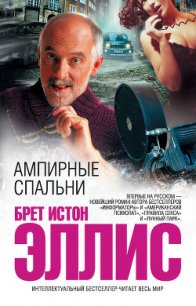[The Girl From UNCLE 01] - The Global Globules Affair - Latter Simon (е книги .txt) 📗
"It's okay, Pop," she said softly, coming close. "You'll just sleep, that's all—just sleep."
His eyes glazed even as she spoke. April eased him into the corner, where the console hid him from a casual glance. She sped to the front door, turned a massive key and gently opened the heavy door. The rain had stopped. Golden shreds patterned the sky. She surveyed the path curving between shrubbery to the eastern wing, paused for a moment, then stepped hack into the morgue-like hall. She called extension 12.
"Karadin," he snapped. "Sam, I told you not to call me unless it was urgent."
"I've remembered what I wanted to tell you," said April. "We have Suzanne. She is in the Baldini Clinic in west London. Phone them and confirm it. We also have Ginger Coke—and a few others."
She heard him gasp before she lowered the handset, sped to the front door and out on to the path, ducking under a bush when she saw Karadin and two white-coated figures rushing along the verandah.
Her trained, experienced and highly intuitive mind reasoned that Moorfell was more a testing base than a research centre. The extensions to the original house, although cleverly constructed of local stone, were not more than a year old. The switchboard's intercom key tags bore only one marked LAB. April had noticed three marked TEST, and two marked RANGE. Therefore the extensions must be mainly functional and contained few sleeping and living quarters—probably only four, excluding the three rooms on the second floor—because the other key tags were numbered 8 to 12. Karadin was 12 and he'd come from this end. He wouldn't go chasing the length of the building each time he wanted to leave, or at times of test on what could well be outside areas—or ranges.
The door was cleverly disguised to appear as an unbroken wall covered with flowering clematis. April swiftly peeled off the sealing of a lock-blowing device, inserted this deep into the oval slot and detonated it. The flat-sounding "phut" wasn't even loud enough to worry the birds, although a black bird went skittering and squawking across the drive—more in protest against her than at any noise, because he started his swoop a second before the miniature explosion came.
April checked the door surrounds, discovered the alarm strip, saw it was not activated and deduced that a master switch must control it, although probably this wasn't made live until a certain time. She neutralized the strip so that it wouldn't set off the alarm when activated.
She eased the door closed and stood on a tiled area from which one slope led downwards and the other up. Quartz lighting beamed from cornices set at angles along each wall, alternating from each side. She chose the up slope, followed it around a curve and came directly into a dome-ceiling room containing a row of racks full of cylinders. Trolleys, similar to those used to move oxygen, were lined, soldier-like, against the racks.
To the left were shelves on which were arrayed an intriguing selection of items. April noted them carefully. Training had not given her the gift of mental photography, but it had turned that gift into the split-second accuracy of a reflex camera. She didn't clutter the screen of her mind with unnecessary or unwanted images, but that which she wished to see and record was implanted there with lightning speed.
Butterfly nozzles as used in lawn spraying. Several sizes of candy-striped barber's poles. Barber's poles?––She saw Carnaby Street and the strangely speeding poles and felt a tingle of excitement.
Then a selection of miniature street lamps and traffic signals. What the hell? She inspected these more closely, fiddled with one, and almost lost the top of one finger when she touched a hidden switch and a small but powerful motor attached to tiny metal vanes started up, sending a strong force of air against her hand.
Next came a collection of street signs. "No waiting" discs. "One way", "Stop", "No U turn" and suchlike, as well as street name plates for wall or post fixing. She discerned only two differences from the real thing. They were thicker, and the underside edges bore a row of tiny holes. She picked up one, expecting it to be heavy metal. It was feather light, metal-simulated polystyrene which looked exactly like the real thing. The rear side had a flat plastic box heat-welded on to the base, a small slide aperture dead centre. Cautiously she moved the slide to the left. A small button was revealed. She pressed it and wasn't surprised to feel a tiny motor buzzing into life. Air flowed out quite strongly from the holes.
Telephone insulators, dummy plastic but impossible to tell the difference at a few yards' distance, cable insulators, electric light bulbs—which weren't, but in daylight who could tell?—fluorescent tubes, a gaily striped shop or door canopy, the edges of its frame perforated with holes. A varied and amazing selection of natural objects, and almost every one a fake.
"This is ridiculous!" April muttered. "Who would want to forge street signs?"
She tested the sliding door in the far wall. It rolled smoothly open. She closed it, surveyed the long, narrow room. Undoubtedly the LAB. Not a science-fiction writer's dream. Very clinical, clean and disappointing. A long work bench, porcelain trays neatly stacked at one end. A row of plastic jerry-cans—all empty. Then a functional sink, a small water heater, electric kettle, a coffee percolator.
The whole of one wall was lined with dull grey cabinets looking like out-of-work washing machines. April concentrated on these and was happy to recognize the lay-out required for the despised Parsimal theory, from the pressure-filled storage compartment right through to pulsator, separator and air-extraction unit. Now the whole caboodle was going click, click, click in her mind. Karadin the old fraud! Denying Parsimal but copying the whole technical lay-out to prove the theory. All except one important part.
April flashed her mind back to her student days in Paris. The screen of memory hazed, flickered, then cleared. She went again to the last cabinet, and slid open the inspection flap. The Parsimal Theory didn't require a compressor. In fact a compressor would nullify the earlier stages, so the processing was a waste of time. It was jelling now. For a moment April wished she had gone on to a degree in physics, for she felt her present knowledge inadequate for the task. Then suddenly she had the link—separate and compress instead of separate, diffuse and direct, and what would you get? Molicular globules in suspension! That wasn't the correct technical definition, but the substance was near enough an answer to satisfy her.
The apparatus also would satisfy the British authorities, because similar processes could be used for research into air pollution via rain, fog, mist or steam condensation. Dr. Karadin didn't have to disclose his method or techniques and formulas. April's excitement grew as she discovered proof linking to what, in the first instance, had been a hunch on her part. But she still needed more evidence.
The next door had to be persuaded. It wasn't difficult to break the magnetic circuit, but the task took time. At last she was inside the Karadin sanctum––this was obvious by the furnishings, the desk photograph of his daughter and himself. The far door was partly open, as was a steel filing cabinet. Proof of his hurried exit.
"Well, thank you, Dr. K," April muttered. She closed the door and went swiftly to the files. This took time, but it was not time begrudged. She ignored the ordinary business files of letters after a quick glance through them. A slim file at the back held her attention. It contained photostat copies. The originals, according to code symbols, were in America. She didn't wait to decipher these in full, but pressed on to the contents. These were written in Urdu.



